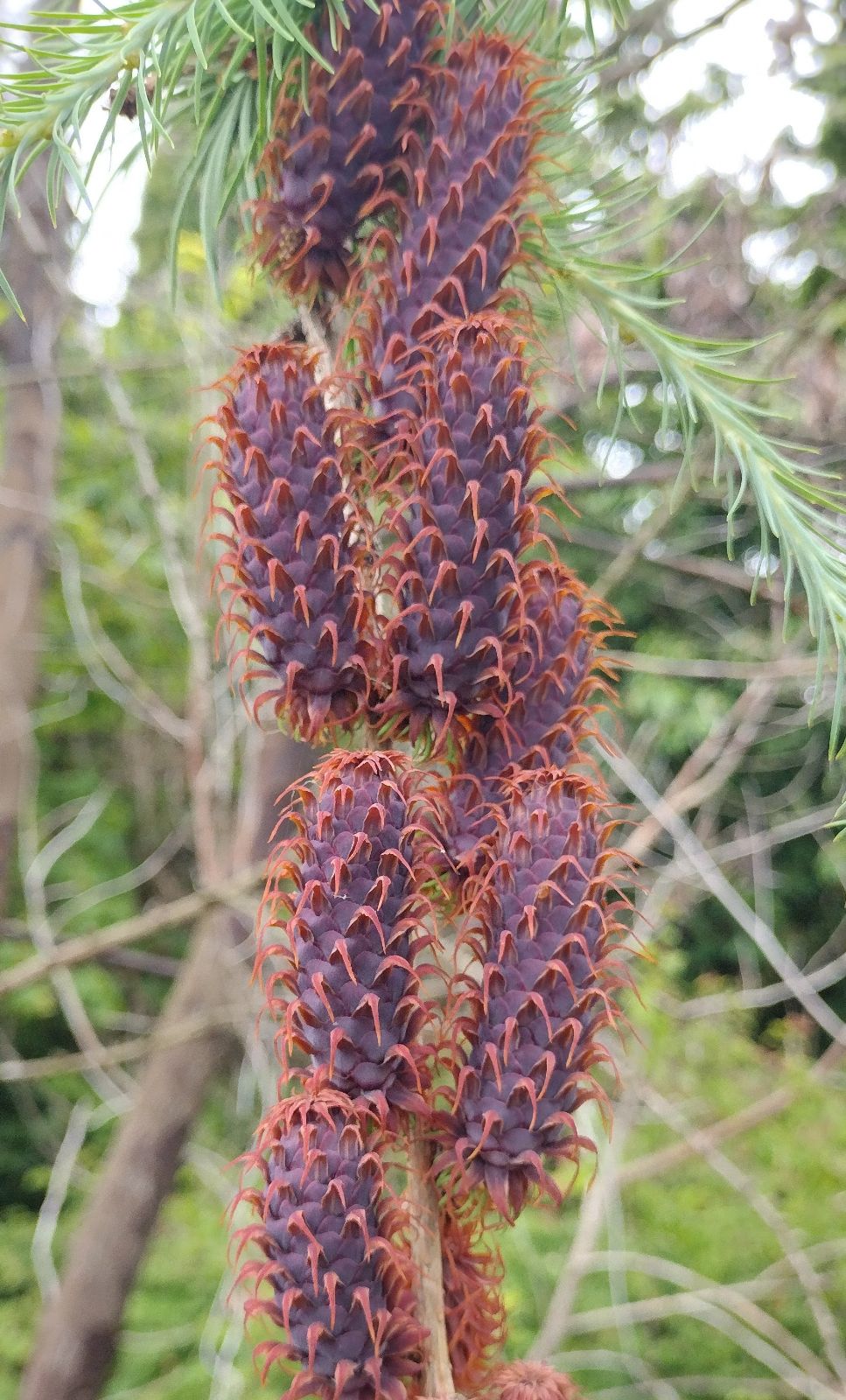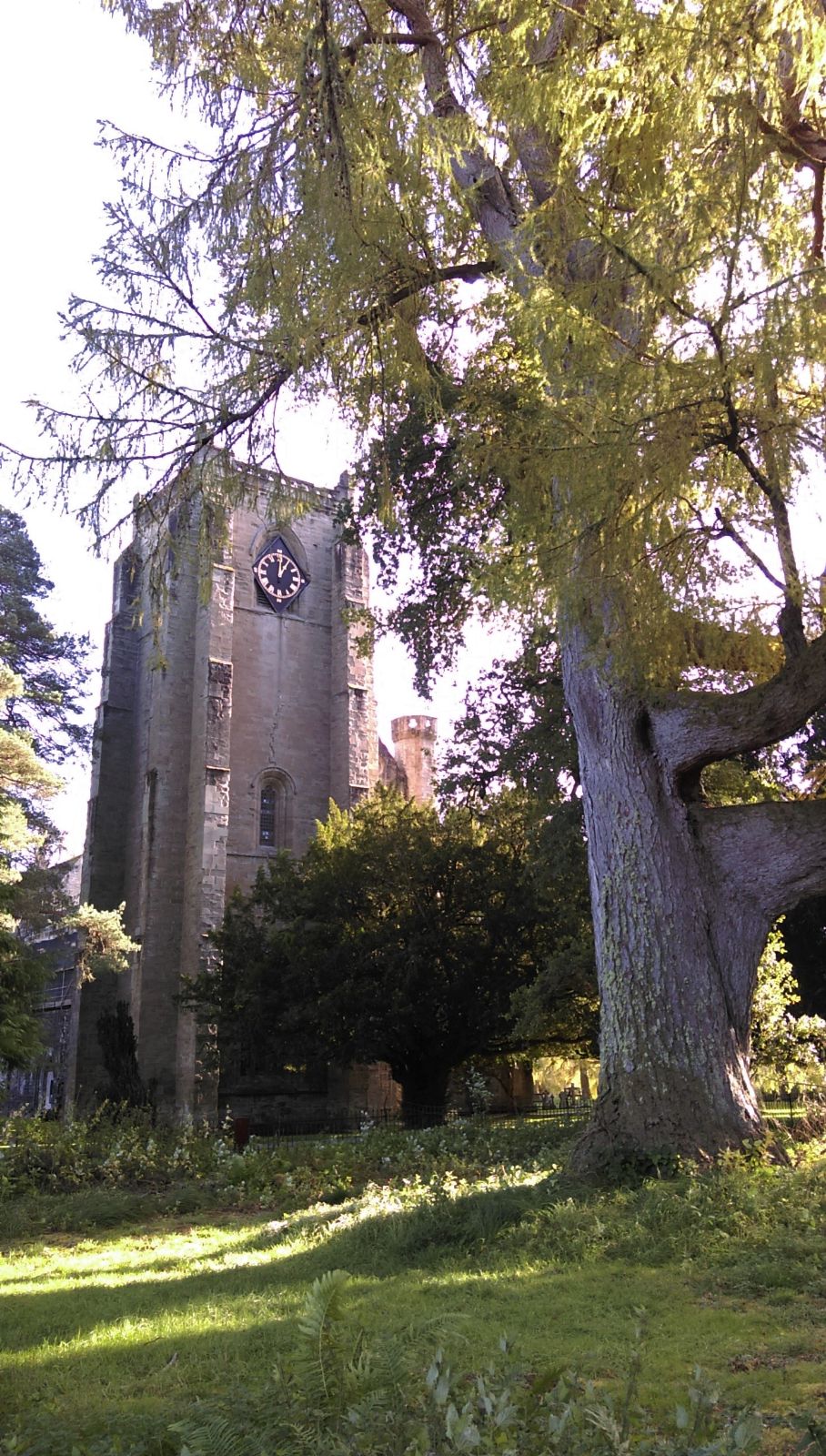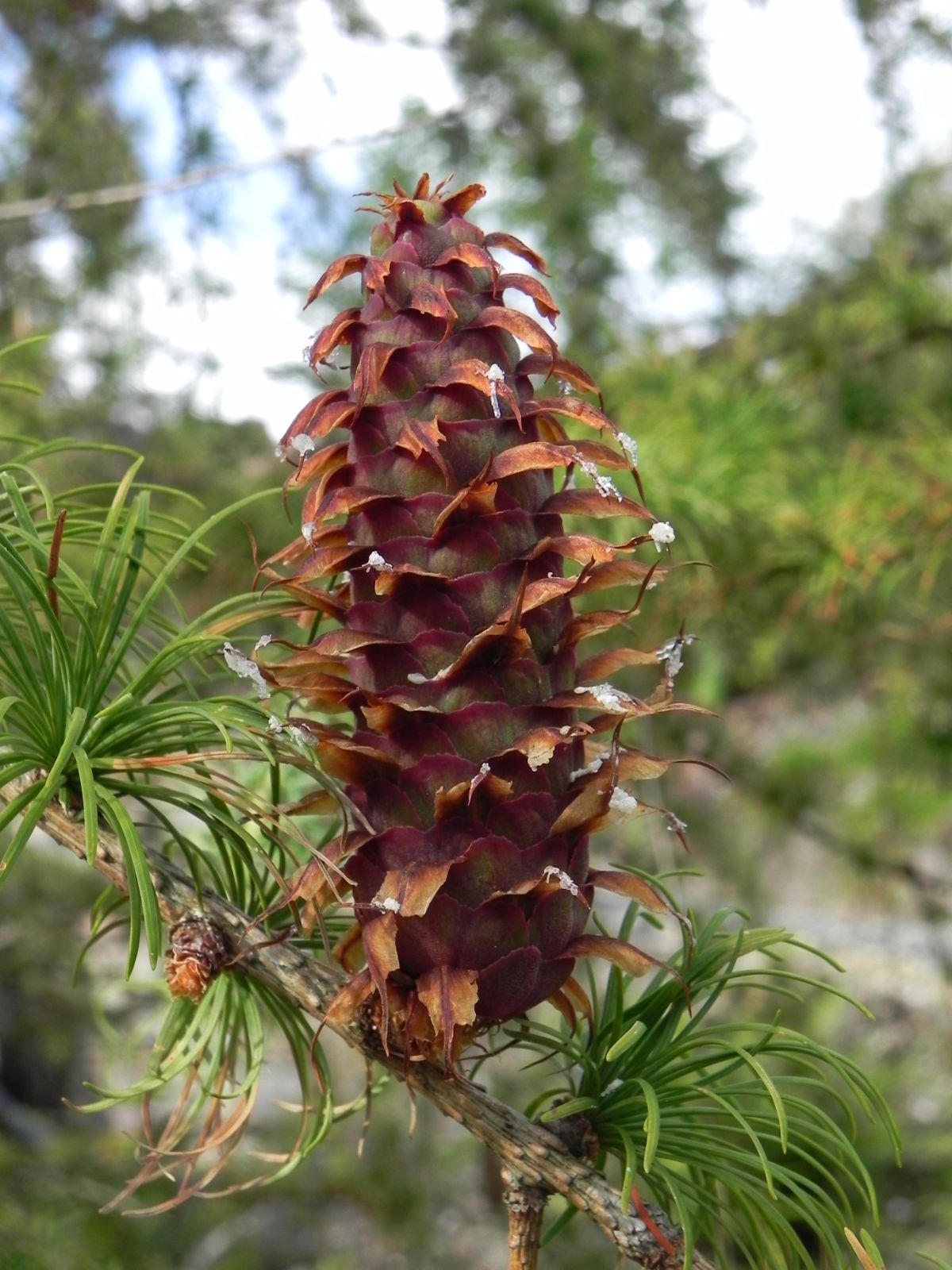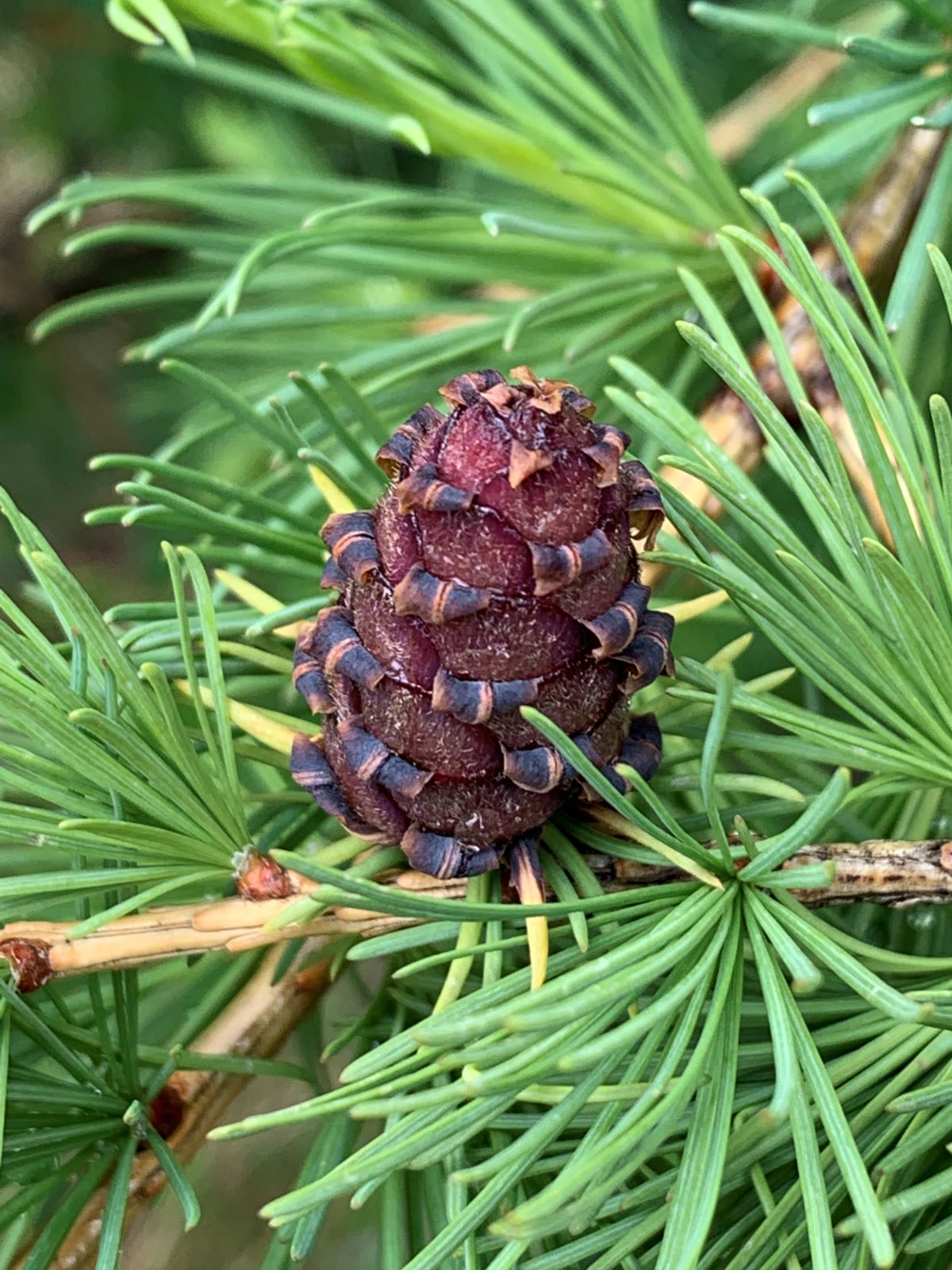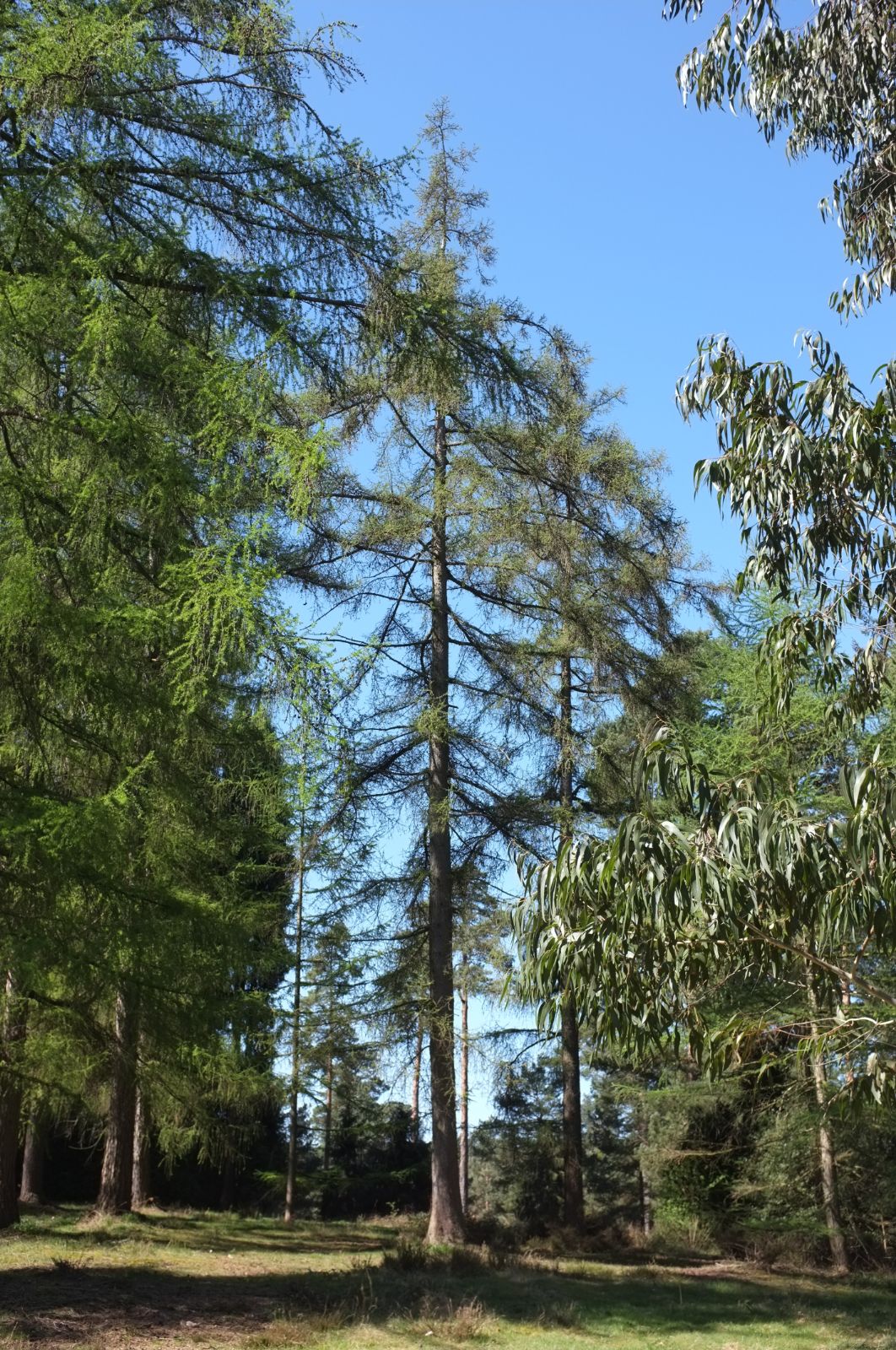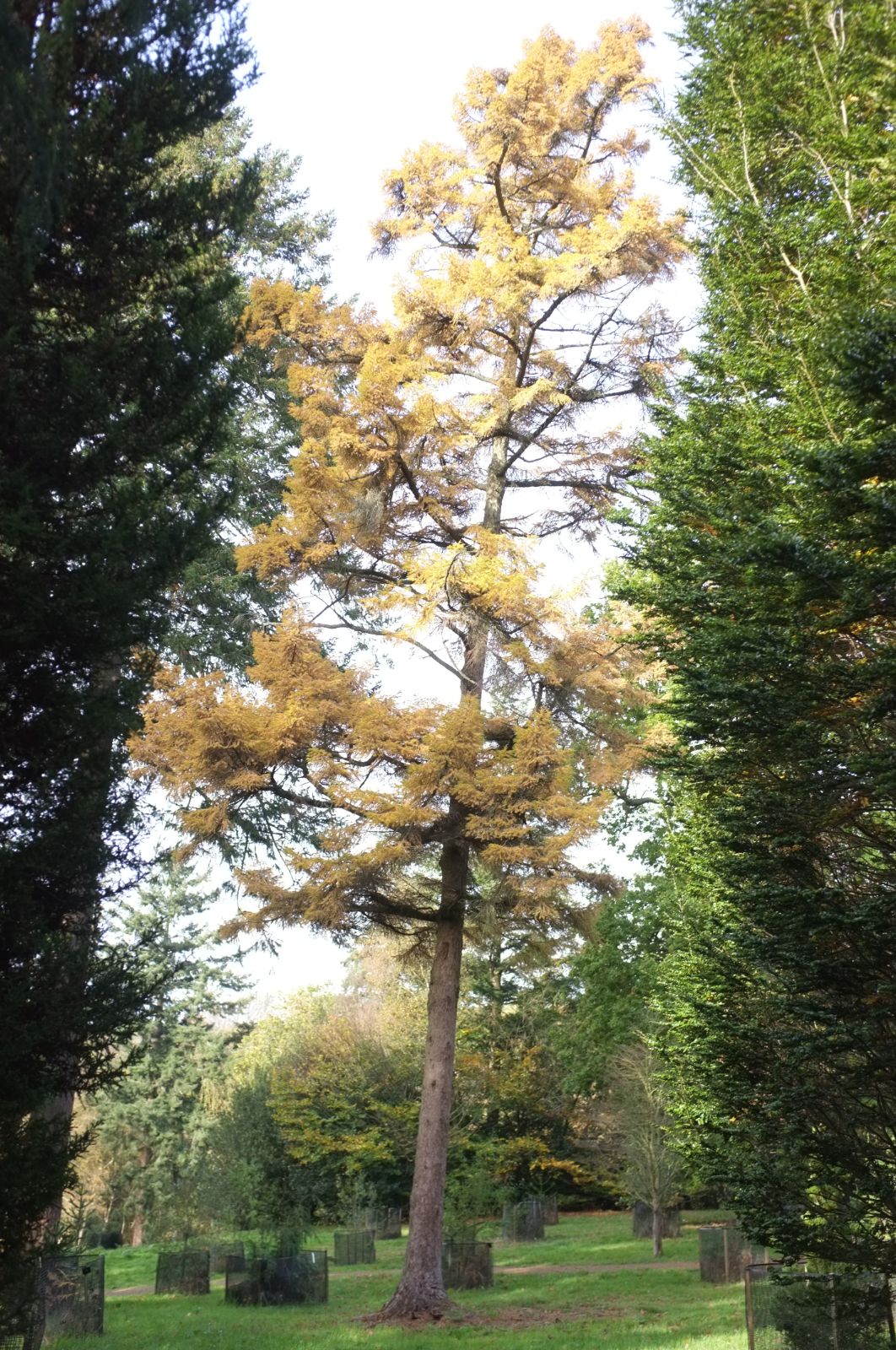Larix
Sponsor
Kindly sponsored by
This genus has been sponsored and new text is being prepared.
Credits
Article from Bean's Trees and Shrubs Hardy in the British Isles
Article from New Trees by John Grimshaw & Ross Bayton
Recommended citation
'Larix' from the website Trees and Shrubs Online (treesandshrubsonline.
Family
- Pinaceae
Common Names
- Larches
Editorial Note
We are delighted to have recently received sponsorship to enable the account of Larix to be updated. It is anticipated the new text will go live in late 2024. Trees and Shrubs Online relies on generous donations to meet its core costs, and sponsorship to enable new text to be researched, written, edited and published. The project is indebted to the many individuals, organisations and charities that have contributed generously to our aim of disseminating new, high-quality information for free, for everyone.
The TSO team is keen to hear from anybody interested in supporting our ongoing work. We are particularly keen to secure funding to update the Japanese maples and to provide urgently-needed accounts of up-and-coming genera such as Lagerstroemia, Loropetalum and Heptapleurum (Schefflera) for which very little information is currently available to gardeners. To enquire about sponsorship opportunities please write to editor@treesandshrubsonline.org
TC, April 2024
Larix is a genus of 10–15 species, dependent on taxonomic viewpoint, distributed across the northern hemisphere. Some authors recognise local varieties as full species, and the situation is further complicated by extensive hybrid zones where species meet. Three species (L. gmelinii, L. laricina and L. sibirica) are widespread in the boreal forests of Eurasia and North America, while the others are restricted to montane or subalpine vegetation at high elevations. Larches are tall trees with straight, columnar (rarely forked) trunks. Together with the Golden Larch (Pseudolarix amabilis (J. Nelson) Rehder), they are the only deciduous members of the Pinaceae. The bark is smooth but soon becomes thick, scaly and fissured. The wood is rich in resins, and the crown can be conical, broad or irregular. Primary branches are produced in regular whorls, though internodal branching is common. There is marked shoot dimorphism, with regularly spaced short shoots on the long shoots. Short shoots develop by a build-up of rosettes of densely packed perular scales and bases of the annual whorls of needles. Immature branchlets may be pubescent or glabrous, and change in colour as they mature. The apical buds are small and continue the growth of the long shoots, while the axillary buds develop into short shoots. In some larch species the shoots occasionally continue to grow through the cones (proliferation), though these shoots do not survive beyond the maturation of the cone. The needle-like leaves are restricted to the short shoots and first-year long shoots; older branches have no leaves. The leaves on short shoots are often shorter and narrower than those on long shoots. They are arranged spirally, and are attached to short pulvini. The stomata are arranged in two rows on the lower leaf surface, separated by a keel, and are often also present on the upper surface of the leaf (amphistomatic). The male strobili are small, solitary and borne at the apex of short shoots, after which the shoot dies. Female cones also form on short shoots, and can occur in all parts of the crown. They develop from the apex of short shoots and are usually erect (occasionally spreading or pendulous). The cones mature in four to seven months from pollination, and are usually persistent, falling only with shed branches. The seed scales are spirally arranged, concave to convex, pedicellate, and open at maturity to release the seeds. Immature cones may be red, purple or green, becoming pale to dark brown at maturity. The bract scales are variable and can be long and exserted or short and included. There are two seeds on each scale; they are partially enclosed in a membranous cup, which extends to form a persistent wing.
Recent genetic research has shown that the former classification of Larix into two sections based on bract scale length and leaf morphology (Farjon 1990) is an artificial split, with the major divergence in fact falling between Eurasian and American species (Gernandt & Liston 1999). There is a secondary division within the Eurasian species, between the short- and long-bracted species (Gros-Louis et al. 2005). Michael Frankis has summarised this work into the following classification.
LARIX Mill.
A guide to the infrageneric classification of Larix
| Section Larix (Eurasia) | Series Larix (short bract scales) L. decidua, L. gmelinii, L. kaempferi,L. principis-rupprechtii, L. sibirica |
| Series Griffithianae Sukacz. (long bract scales) L. griffithii, L. himalaica, L. kongboensis,L. mastersiana, L. potaninii, L. speciosa | |
| Section Grandibractea A.E. Murray (North America) | Series Lyallianae Sukacz. L. laricina, L. lyallii, L. occidentalis |
Larches readily form hybrids, both in the wild and in cultivation, and there are few barriers to hybridisation, though intersectional crosses have very low seed yields (Dallimore et al. 1966). One hybrid, L. × marschlinsii (L. kaempferi × L. decidua, better known under its older synonym L. × eurolepis), is very widely cultivated.
The larches have long been a group of great interest to foresters, and most species have been introduced and tested for commercial purposes. Few have proved to be useful away from cold climates, however, as their origins in high places or cold regions make them susceptible to spring frosts and various fungal and insect problems in gentler conditions (Dallimore et al. 1966). Although shapely when young they are apt to be gaunt and somewhat gawky with age, and, if successful, potentially very large trees, so they are not well suited to smaller gardens. They are redeemed, however, by the beauty of their foliage, fresh green in spring and glorious yellow in autumn, and for this they are an essential component of a large landscape or parkland planting where a small group can be positioned together. Although tolerant of a wide range of soil types, they do best on a well-drained slope.
Many species and their infraspecific taxa have been very well covered by Bean (1981a) and Krüssmann (1985b). Synonymy in the genus is extensive and ‘new’ names are likely to be encountered occasionally. A reference to Farjon’s World Checklist and Bibliography of Conifers (2001) is invaluable for attributing these to recognised species, but it should not be forgotten that such names may refer to local populations with useful (or otherwise) horticultural qualities, and that opinions on the taxonomic status of these plants differ. Identification often requires mature cones, and may sometimes depend on reasonably accurate knowledge of a specimen’s provenance. A taxon that collectors should look out for is Larix speciosa W.C. Cheng & L.K. Fu, from far western Yunnan and northeastern Myanmar (syn. L. griffithii var. speciosa (W.C. Cheng & L.K. Fu) Farjon – although it is most closely related to L. potaninii var. australis). This is the world’s southernmost larch, occurring south to about 25° 50’ N. It was collected on several occasions by George Forrest under the name L. griffithii (Mill 1999); no specimens are currently known to have survived but it could conceivably be found in arboreta mislabelled as L. griffithii or L. potaninii. We are grateful to Michael Frankis and Keith Rushforth for their help with this account.
There is a reasonable representation of larches in many arboreta. The Coram Experimental Forest near Hungry Horse, Montana holds the International Larix Arboretum. This was established in 1992 to enable direct comparisons to be made between the different species, and a representative collection has been planted (USDA Forest Service 2003). So far, however, no comparative data seem to have been published.
Bean’s Trees and Shrubs
Larix
Larch
Amongst the comparatively few deciduous conifers, the larches stand out as peculiarly well marked and distinct. They are all trees of timber-producing size, forming an erect, tapering trunk, carrying usually a cone-shaped head of horizontal branches upturned at the ends, the branchlets pendulous. As in the cedars, the branchlets are of two kinds: (1) elongated slender ones, growing from a few inches to 2 ft or more yearly, and bearing the leaves singly and spirally; and (2) short, spur-like ones which lengthen a minute fraction of an inch annually, and bear numerous (20 to 40) leaves crowded in a terminal tuft. Leaves linear or needle-like, falling in autumn. Flowers unisexual, both sexes appearing on the one tree. Males globose to cylindrical, made up of numerous yellow-anthered, short-stalked stamens. Females erect, globose, usually red, developing into a cone composed of thin, concave, rounded, very persistent, woody scales; bracts either protruded or included. Seeds in pairs on each scale, winged, ripening and falling the first autumn. Of its nearest allies, with a similar leaf arrangement, Pseudolarix differs in the much larger, more woody cone-scales falling away early from the central axis; Cedrus is, of course, evergreen, and its cones much larger.
The larches are widely spread over the cool parts of the northern hemisphere, often in mountainous regions. They like a fairly good loamy soil, and an abundant rainfall. One species, L. laricina, succeeds in damp spots, but the rest like a well-drained site. They should always, if possible, be raised from seeds, which should be sown evenly and thinly, and slightly covered with soil – the common larch out-of-doors, usually in raised beds not more than 4 ft wide to facilitate weeding, the rarer ones in unheated frames for better protection. They may be planted out permanently at 11⁄2 ft high and upwards. Rarer sorts can be grafted in spring on seedlings of the common larch.

